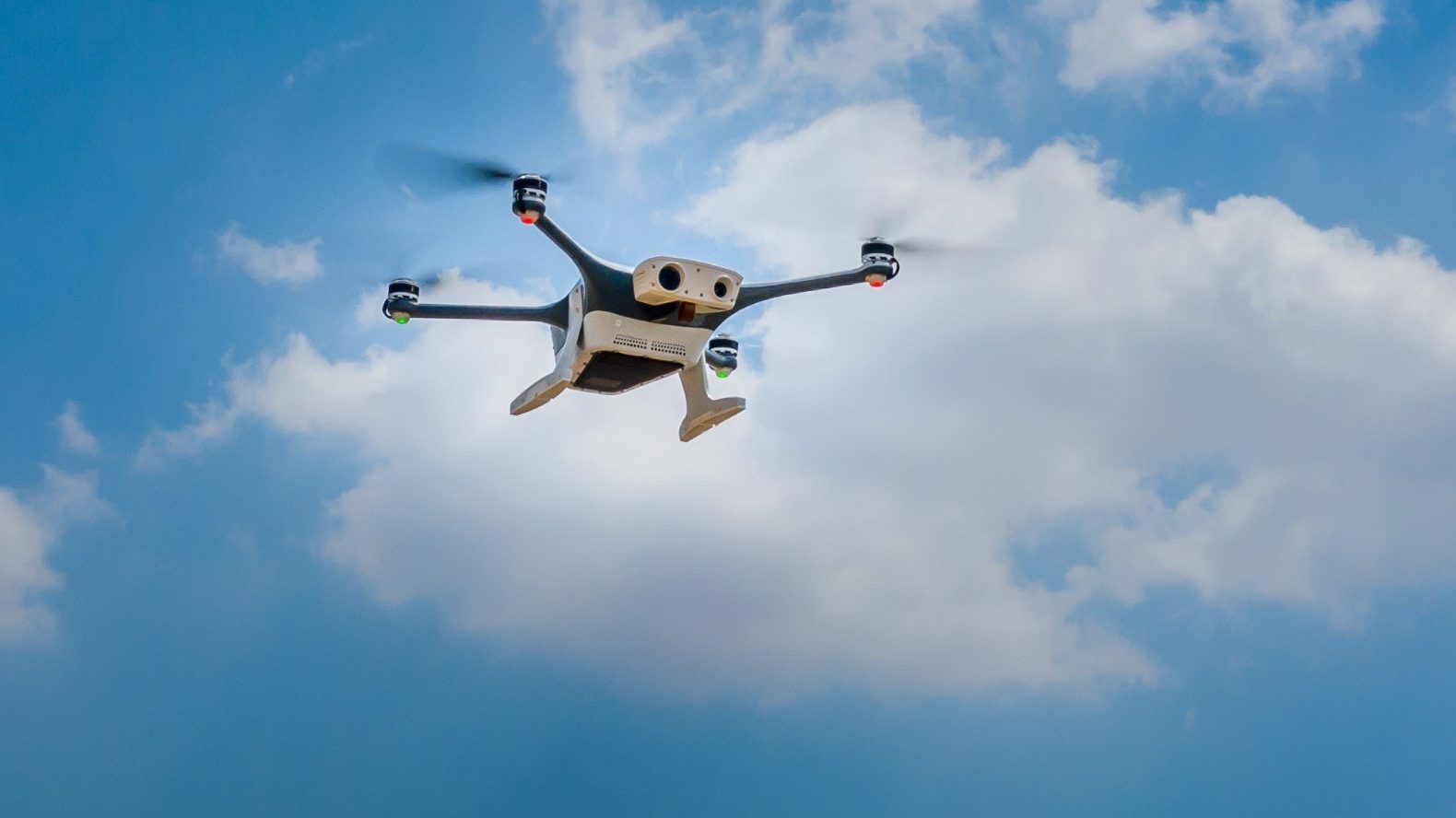Israeli Autonomous Drones Safeguard Power Grid in Hurricane-Prone Florida
Monitoring technology provides potentially lifesaving assistance
The Florida Power & Light Company (FPL) will use automated drones manufactured by the Israel-based Percepto company to detect problems in the power grid after hurricanes.
The drones perform their monitoring activities without human intervention. All that is needed is the equipment and cloud software.
“The drone comes out of the box, inspects the power line, for example, and they can land in their box or another box, charge, and wait for the next mission. That entire process is automated, meaning you don’t have to get anybody involved in that loop for that to happen,” Dor Abuhasira, CEO and co-founder of Percepto, told The Media Line.
The drones also are being used more regularly by the company to look for any potential problems and provide security, through artificial intelligence and thermal vision photography capability, allowing them to see in the dark, according to Abuhasira.
More storms hit Florida than any other US state. At least six major hurricanes have hit Florida in the last two decades.
FPL refused to comment on its use of the drones despite repeated calls from The Media Line.
We can now inspect faster and more often and the results are better
Shay Hen, production service innovation manager at ICL (formerly known as Israel Chemicals Ltd) Dead Sea, who oversees the Percepto drones, told The Media Line how the drones work to monitor electric grids.
“We produce electricity with about 900 electric grid poles and approximately 124 miles of power lines. We need to inspect them in thermal vision so we can identify abnormal temperatures, using autonomous drones to do so,” he said.
“They’re like an eye in the sky, especially at night with the thermal vision, it’s like our night vision, so we can send them to do security and on-site inspections,” Hen added.
Utility producers, like refineries, mines and electricity grids, all require inspection and monitoring to function efficiently and properly. Traditionally, of course, this was the responsibility of individuals and subject to human limitation.
Hen explained that electric grid inspections, which previously were done by hand-held cameras, produced inferior inspections.
“Hand-operated cameras are just not the same thing. When you inspect from the sky, it’s a better view, and another advantage is that everything is uploaded to the same system so the whole site can see at all times the data and afterwards we get reports,” he said. “Before, we needed to do the whole procedure by hand and it took more time.”
“We can now inspect faster and more often and the results are better,” he said.
The consequences of not catching equipment problems in time can be devastating.
In 2018, faulty Pacific Gas & Electric Company power lines ignited what is known as Camp Fire, the deadliest and most destructive wildfire in California’s history, that burned a total of 153,336 acres, destroyed the town of Paradise, California, and resulted in 85 deaths.
“The power company is doing what is currently market standard of inspecting the grid once a year, which is what makes sense when you have people doing it,” Abuhasira said.
The future of potentially life-saving infrastructure monitoring may very well be in automatic drones.
When the inspection is fully automated, instead of having someone inspecting the network once a year, we can have the entire network inspected almost every week
The automation of the inspection process allows for constant surveillance of the entire system in a manner that is impossible for humans to replicate.
“When the inspection is fully automated, instead of having someone inspecting the network once a year, we can have the entire network inspected almost every week,” Abuhasira said.
Hen has experienced this up close at ICL Dead Sea.
“We inspected the power lines once a year and it took all year to do it because we have such a huge power grid. Today we do it once a month and it takes us about three or four days,” he said.
Automatic drones are useful in other infrastructure besides power grids.
Hen uses Perceptor drones to measure potash piles for volume and for monitoring hundreds of kilometers of pipes filled with gas and other material.
For the latter, Hen says the drones are able to detect the temperatures of the material in the pipe, which can be different than they are in the environment.
“We use the thermal vision to identify those abnormal temperatures so we can maintain the pipeline every day,” he said.


